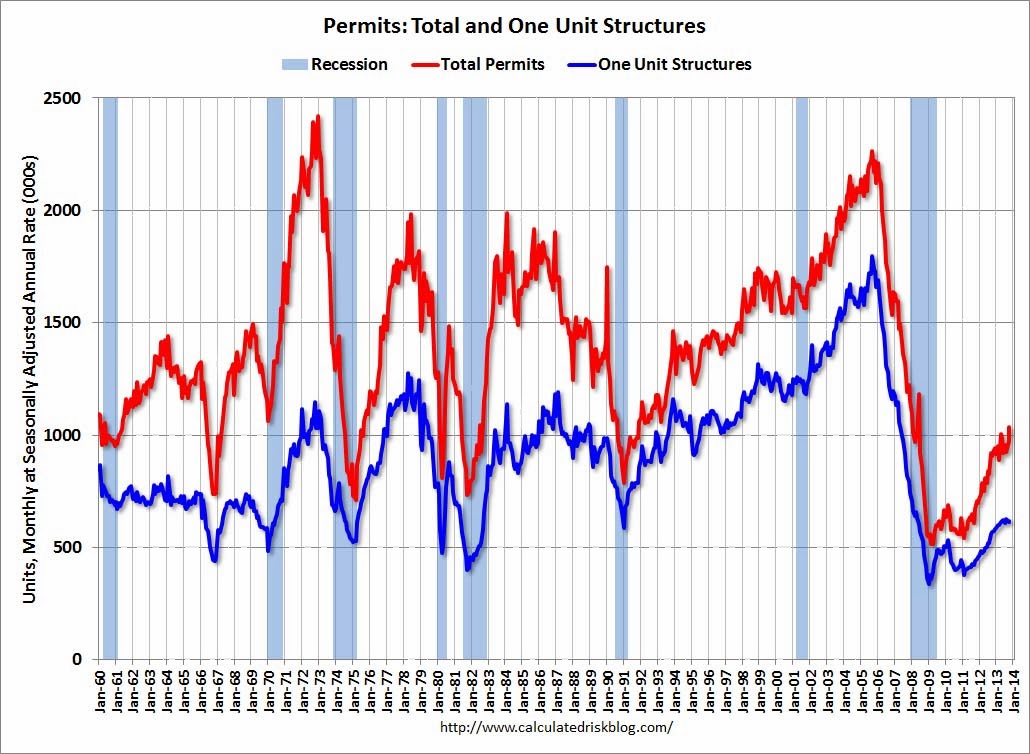Drop In Housing Permits: Despite Efforts To Increase Construction

Table of Contents
Economic Factors Contributing to the Drop in Housing Permits
Several significant economic factors are contributing to the decrease in housing permits, creating a challenging environment for developers and homebuyers alike.
Rising Interest Rates and Mortgage Costs
The significant increase in interest rates has dramatically impacted the housing market. Higher interest rates directly translate to considerably more expensive mortgages, making homeownership less accessible for many potential buyers.
- Higher borrowing costs deter potential homebuyers. With higher monthly payments, fewer individuals can afford to purchase a new home, thus reducing demand.
- Developers are less likely to secure financing for new projects. Increased interest rates make it more expensive for developers to borrow money to fund new construction projects, leading to fewer projects being initiated.
- Increased mortgage payments strain household budgets. Even for those who can qualify for a mortgage, the increased monthly payments can strain household budgets, potentially leading to decreased spending in other areas of the economy. This ripple effect further dampens overall economic activity.
Inflation and Material Costs
Soaring inflation has driven up the cost of building materials exponentially, impacting the profitability and feasibility of many construction projects. This cost escalation is a major deterrent for developers considering new projects.
- Lumber, concrete, and other materials are significantly more expensive. The increased cost of raw materials directly translates into higher construction costs per unit, reducing profit margins for developers.
- Developers face increased uncertainty about project costs. Fluctuating material prices make it challenging for developers to accurately budget and forecast project expenses, adding another layer of risk to new construction.
- Higher material costs translate to higher housing prices. The increased cost of construction is ultimately passed on to the consumer, further reducing affordability and impacting demand.
Reduced Consumer Confidence
Economic uncertainty and concerns about a potential recession are leading to decreased consumer confidence, which directly impacts the demand for new homes. This hesitancy is a key driver in the drop in housing permits.
- Consumers are hesitant to make significant financial commitments. In times of economic uncertainty, consumers are more likely to postpone major purchases like new homes, opting for a wait-and-see approach.
- Demand for housing slows down, reducing the need for new permits. Lower demand directly translates into fewer permits being requested and approved by local authorities.
- The overall economic climate influences housing market activity. The housing market is sensitive to broader economic trends; periods of uncertainty often lead to reduced activity.
Regulatory Hurdles and Permitting Processes
Beyond economic factors, bureaucratic inefficiencies and restrictive regulations pose significant hurdles to new housing construction, contributing to the decline in permits.
Lengthy and Complex Permitting Procedures
Navigating the permitting process for new housing developments can be a lengthy and complex undertaking, often characterized by bureaucratic delays and administrative hurdles.
- Streamlining permitting processes is crucial for efficient construction. Simplifying the bureaucratic process can significantly reduce the time and costs associated with securing permits.
- Excessive regulations can increase costs and project duration. Overly stringent regulations increase project costs and timelines, making it less attractive for developers to pursue new projects.
- Reducing red tape would encourage more housing construction. A less burdensome regulatory environment would undoubtedly stimulate the construction of new housing.
Zoning Regulations and Land Use Restrictions
Restrictive zoning laws and land use policies limit the availability of land suitable for new housing developments, further exacerbating the shortage.
- Relaxing zoning regulations could increase housing supply. Less restrictive zoning would open up more land for development, increasing the potential supply of new homes.
- Addressing restrictive land use policies is essential for growth. Outdated or unnecessarily restrictive land use policies need to be reviewed and revised to accommodate the need for more housing.
- Finding a balance between preservation and development is necessary. A careful balance must be struck between protecting existing communities and allowing for necessary growth to meet housing demand.
Government Policies and Initiatives
Government policies and initiatives play a significant role in shaping the housing market. The effectiveness of existing programs and the potential for future intervention are crucial considerations in addressing the decline in housing permits.
Effectiveness of Existing Housing Programs
Various government programs aim to stimulate housing construction and support affordable housing initiatives. However, a critical evaluation of their effectiveness is necessary.
- Analyze the impact of current government incentives on housing permits. A thorough assessment is needed to determine whether current incentives are effectively encouraging new construction.
- Assess the success of initiatives designed to support affordable housing. Analyzing the reach and impact of affordable housing programs is essential for improving their effectiveness.
- Evaluate the need for adjustments to current policies and programs. Based on the evaluation, necessary adjustments to existing policies and programs can be made to better address the current challenges.
Potential for Future Government Intervention
The drop in housing permits may necessitate further government intervention to stimulate the market and address the critical housing shortage.
- Explore the potential for tax breaks and subsidies for developers. Financial incentives could encourage developers to undertake more housing construction projects.
- Consider the role of public-private partnerships in construction. Collaborations between the public and private sectors can leverage resources and expertise to efficiently build more housing.
- Investigate the possibility of direct government investment in affordable housing. Direct government investment can help increase the supply of affordable housing options, addressing a critical need.
Conclusion
The recent drop in housing permits is a complex issue stemming from a confluence of economic headwinds, regulatory hurdles, and the effectiveness of government policies. Addressing this critical issue requires a comprehensive, multi-pronged approach involving collaboration between the public and private sectors. Streamlining permitting processes, addressing restrictive zoning regulations, and implementing effective government incentives are crucial steps to reverse the decline in housing permits and alleviate the ongoing housing shortage. Understanding the causes behind this significant drop in housing permits is the first step towards finding effective solutions and stimulating growth in the vital housing market. Let's work together to find solutions for this critical issue and ensure everyone has access to safe and affordable housing.

Featured Posts
-
 Prakiraan Cuaca Bali Besok Berawan Hujan Ringan Di 5 Daerah
May 28, 2025
Prakiraan Cuaca Bali Besok Berawan Hujan Ringan Di 5 Daerah
May 28, 2025 -
 58m Striker Bid Rejected Arsenal Leads Race For Top Transfer Target
May 28, 2025
58m Striker Bid Rejected Arsenal Leads Race For Top Transfer Target
May 28, 2025 -
 Understanding The Padres Cubs Series Performance And Strategy
May 28, 2025
Understanding The Padres Cubs Series Performance And Strategy
May 28, 2025 -
 Did Ryan Reynolds Sabotage Justin Baldoni Exploring The Legal Ramifications
May 28, 2025
Did Ryan Reynolds Sabotage Justin Baldoni Exploring The Legal Ramifications
May 28, 2025 -
 Padres Vs Astros A Deep Dive Into The Series Prediction
May 28, 2025
Padres Vs Astros A Deep Dive Into The Series Prediction
May 28, 2025
